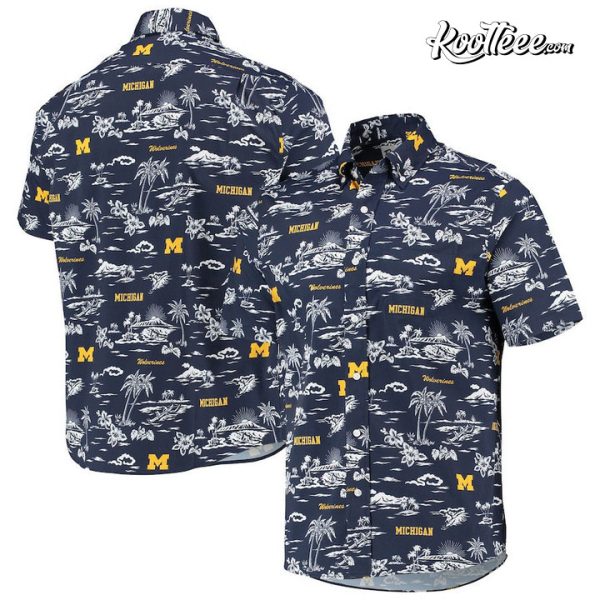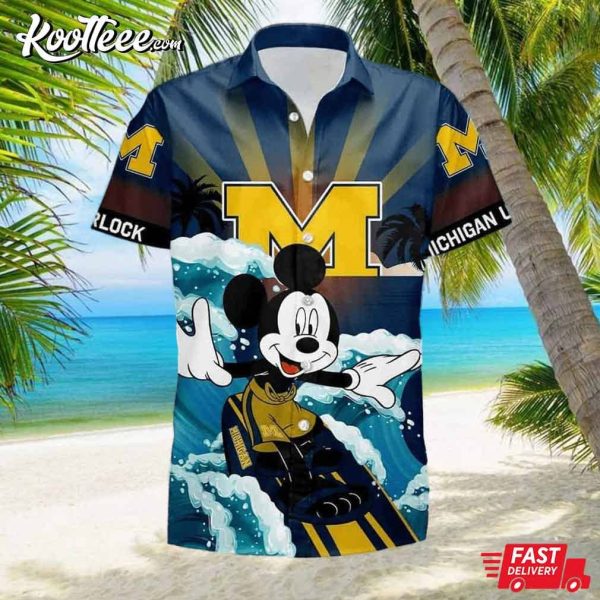What Makes a Vintage Hawaiian Shirt Valuable?
 Koolteee Store
Koolteee StoreTable of contents
- 1. Age: The Older, the Rarer (Usually)
- 2. Fabric: Rayon Rules the Vintage Scene
- 3. Label Watch: Brands That Made History
- 4. Design & Print: The Louder, the Better
- 5. Condition: Wear and Tear vs. Vintage Charm
- 6. Limited Runs or Deadstock? Jackpot.
- 7. Pop Culture and Modern Influence
- 8. Collectibility and the Resale Market
- Final Thoughts: More Than Just a Shirt
We’ve all seen them—vintage Hawaiian shirts hanging in thrift stores, displayed at flea markets, or listed online for jaw-dropping prices. But here’s the million-dollar question (well, sometimes literally): What actually makes a vintage Hawaiian shirt valuable?
Is it the brand? The fabric? The pattern? The age?
Spoiler alert—it’s all of the above, and then some.
As someone who’s spent more than a few Saturdays digging through secondhand racks and deep-diving into aloha shirt forums, I’ve come to realize that vintage Hawaiian shirts are more than just vacation wear—they’re wearable art, cultural history, and serious collector’s items.
So whether you’re a fashion lover, a nostalgic shopper, or someone who just wants to know if that old shirt in your closet is worth something, here’s a deep dive into what gives these vibrant pieces their value.
1. Age: The Older, the Rarer (Usually)
Let’s start with the obvious: vintage means age, but in the world of Hawaiian shirts, how old matters.
Generally, shirts made before the 1970s are considered the most collectible. These early pieces—especially those from the 1930s to 1950s—were often handmade in Hawaii using rayon and featured detailed prints that reflected island culture.
You can spot these by looking at the labels (more on that soon), checking the buttons (original coconut or shell buttons are a good sign), and inspecting the stitching. If the fabric feels silky and the design looks hand-screened, you might just have a gem on your hands.

2. Fabric: Rayon Rules the Vintage Scene
In modern times, cotton and polyester dominate. But if you’re holding a true vintage Hawaiian shirt, chances are it’s made from rayon—specifically, high-quality “filament rayon.”
Rayon gives that signature drape, softness, and slightly shiny finish that’s so distinct. It was the go-to fabric in the mid-century because it absorbed dye beautifully, which meant brighter, more saturated prints.
Many collectors will tell you: the feel of the fabric is half the magic. Once you’ve held a vintage rayon shirt, it’s hard to go back.
3. Label Watch: Brands That Made History
One of the easiest ways to determine the value of a vintage Hawaiian shirt is by checking the label. Just like vintage denim or band tees, certain brands fetch top dollar.
Keep an eye out for names like:
Kamehameha – One of the earliest and most iconic shirt makers (since the 1930s).
Duke Kahanamoku – Named after the legendary surfer; these shirts are highly sought after.
Musa-Shiya the Shirtmaker – A Japanese-run tailor shop in Honolulu credited with making some of the first aloha shirts in the 1930s.
Royal Hawaiian, Aloha Sportswear, Kahala, and Malihini – All respected vintage labels with loyal collectors.
Older labels were often sewn directly into the shirt (no tags), had Hawaiian motifs or typewritten fonts, and sometimes even said “Made in Hawaii”—which, to collectors, is gold.
4. Design & Print: The Louder, the Better
Sure, Hawaiian shirts are always colorful. But when it comes to vintage Hawaiian shirt value, the design details really count.
Rare prints = higher value.
Some collectible design features include:
Scenic prints: Think hula girls, palm trees, volcanoes, canoes, surfers
Asian influence: Dragons, geishas, bamboo
Border prints: Where the pattern runs along the bottom or sleeves—very desirable
Reverse prints: The design is printed on the inside, giving a faded, soft look (popular in the ’50s and very collectible today)
Matched pockets: High-end shirts aligned the print across the pocket for a seamless look—super impressive and adds to value
If the shirt’s design tells a story, honors tradition, or showcases craftsmanship, it’s more than just fashion—it’s culture.
5. Condition: Wear and Tear vs. Vintage Charm
No one expects a 70-year-old shirt to look brand new—but condition still matters. Collectors look for pieces that are:
Free of major holes or tears
Have original buttons
No huge stains or fading
Still wearable (bonus points!)
That said, a little wear adds charm. A soft fade, slight fray, or a patched repair? Sometimes it makes the shirt even cooler, especially if it's clear the piece has lived a life.
Pro tip: Shirts with provenance (like owned by someone notable, or found in a historic shop) can be more valuable, even with flaws.
6. Limited Runs or Deadstock? Jackpot.
Some vintage Hawaiian shirts were produced in small batches—maybe for a resort, a specific store, or a seasonal event. If you find a shirt with a unique print or a label that’s hard to research, it might be a limited run or even deadstock (unsold vintage stock in unworn condition).
Deadstock shirts with original tags can be incredibly rare and fetch high prices online.
7. Pop Culture and Modern Influence
Let’s not forget the cool factor. If a certain vintage Hawaiian shirt was worn by a celebrity, featured in a movie, or has been replicated by a modern brand, its value goes up fast.
Case in point:
Elvis Presley’s red and white Hawaiian shirt in Blue Hawaii is legendary.
Tom Selleck’s floral shirts in Magnum P.I. brought aloha shirts into the 80s mainstream.
Even Leonardo DiCaprio in Romeo + Juliet helped revive the look for younger generations.
Fashion moves in cycles. And vintage never really leaves—it just waits for the spotlight again.

8. Collectibility and the Resale Market
Today’s fashion lovers aren’t just looking for fast fashion—they’re hunting for pieces with stories.
The vintage Hawaiian shirt market is growing fast, especially among Gen Z and millennials who are into sustainable fashion and retro aesthetics. Online resale platforms like Grailed, Etsy, eBay, and even curated vintage stores have seen a rise in demand for aloha shirts from past decades.
Collectors often pay anywhere from $100 to $1000+ for rare finds—especially from the 1930s to 1950s.
So yes, your uncle’s old shirt might be worth more than you think.
Final Thoughts: More Than Just a Shirt
At first glance, a vintage Hawaiian shirt might just look like a loud piece of beachwear. But the truth is, these shirts carry stories—of culture, craftsmanship, fashion history, and island life.
What makes them valuable isn't just rarity or age—it's the soul woven into every thread. It's the artistry of a carefully matched pocket, the feel of soft rayon, the surprise of finding a rare print no one else has.
So whether you’re a collector, a casual thrifter, or just someone who loves a good statement piece—next time you see a vintage Hawaiian shirt, take a closer look.
Because that colorful, carefree piece hanging on the rack? It might just be treasure.
Stay tuned for more updates:
Subscribe to my newsletter
Read articles from Koolteee Store directly inside your inbox. Subscribe to the newsletter, and don't miss out.
Written by

Koolteee Store
Koolteee Store
Stay cozy and stylish with Koolteee's snug sweatshirts and hoodies. Perfect for lounging at home or stepping out with confidence on colder days. Contact: Phone: +1-202-555-0171 Mail: contact@koolteee.com Adress: 6901 Riverport Dr Louisville, KY 40258, USA Website: https://koolteee.com/ Hashtag: #Koolteee , #KoolteeeStore